

Similarly to Ancient Athenians, Ancient Romans didn’t treat slaves as people. Instead, slaves were legally defined as things. Because of this, their family relationships weren’t recognised in law: they couldn’t officially have a husband, a wife or a child.
Slaves were part of the familia, or family, of the person who bought them. The paterfamilia, or male head of the family, had complete control over them: he could tell them to do whatever he wanted and sell them, beat them or even kill them at will. Slaves had no freedom.
Romans thought that slavery was a natural part of life: members of the public were unlikely to think that it was wrong or immoral. Slavery was very widely practiced, and most people of every social class had at least one slave to help them at work or domestically. Slaves were essential to the day-to-day running of Rome. However, some philosophers, such as the Stoics, were against slavery because they thought every man was equal.

Compare Roman views of slaves to Athenian views. What are the similarities and differences?
There were many ways to become a slave in Ancient Rome. One of the most common ways was being a prisoner of war. Many people became slaves through this method.
Pirates often kidnapped people from coastal towns and made them slaves. Although this was illegal, it was a common practice. Selling children into slavery was also illegal, but for many poor families it was the only way to survive.
Babies that families didn’t want to keep were exposed – this meant that they were left outside somewhere on their own to die. These babies could be picked up and sold as slaves. This was legal during the Republic, but after Rome adopted Christianity as its main religion this practice soon became illegal.
Slave women couldn’t keep any children that they had – these children became the property of the slave’s master. Any child of a slave woman automatically became a slave themselves: this was the case both when the father was another slave, and when the father was a freeman (i.e., the slave’s master). These slaves were often more valuable than other types of slaves, because they could be well-educated and trained from a young age. They were known as vernae. Breeding slaves wasn’t a very common practice, because raising a slave child cost a lot of money, and this money could only be made back when the child grew up. However, by the later years of the Empire slave breeding became more common. This was because Rome's slave population had decreased. Therefore, slaves became more expensive to buy - they were more valuable because there was less of them - so breeding slaves was a more cost effective alternative.
Finally, criminals could be sentenced to slavery. They usually performed the worst and most dangerous jobs, such as mining and fighting as a gladiator.

Why was breeding slaves not commonly practiced? Why did it become more common?
What type of slave do you think would be most and least desired by masters? Consider aspects like age, education, gender, etc.
Public slaves were essential to the running of day-to-day Roman life, and did many of the important administrative tasks. For example, they looked after the Roman aqueducts, without which Romans couldn't get clean water. They also maintained Roman baths and temples, and sometimes served as storekeepers. They often assisted Aediles with maintenance of public buildings, sewers and roads, and aided in other bureaucratic tasks like financial paperwork. They could also help with some religious activities, such as aiding priestesses with making sacrifices.

Some public slaves had a peculium. A peculium was essentially a wage that was given to slaves. Slaves could save this money up and use it to buy their freedom, which motivated them to work harder.
How much power do you think public slaves could have?
Do you think it would have been good to be a public slave?
Some slaves worked for their masters on what was known as a Villa Rustica. Most wealthy Romans had a Villa Rustica: a countryside estate that was used for farming. However, these wealthy individuals usually lived in Rome and rarely visited their Villa Rustica, so it was looked after by an employee known as a vilicus instead.
Most slaves in a Villa Rustica did farming. This could be hard, back breaking work, and they were expected to work between 9 and 15 hours a day with only one break. They had holidays much less often than slaves that worked in the city.
Slaves that could build up good relationships with their masters were naturally more likely to be freed. Therefore, because slaves in a Villa Rustica rarely saw their masters they were unlikely to be freed. On the other hand, the fact that they rarely saw their master did allow them slightly more freedom in their day-to-day lives - after all, they didn't have their master watching over their behavior every day. This was particularly true for the vilicus (the overseer of the Villa Rustica), who was usually a slave himself. This vilicus had a lot of responsibility and a lot of power.
Because they were required to do hard manual labour, slaves working in a Villa Rustica were usually relatively well looked after – they were given food, clothing and medical attention. However, this good treatment had limits: most farms had a prison where slaves were chained up overnight.
How could a slave have got some power in a villa rustica?
Do you think slaves working in a villa rustica lived a good life? Why/Why not?
Most wealthy Romans also had a Villa Urbana. Like the Villa Rustica, this was in the countryside. However, rather than being used for farming, a Villa Urbana was a place for the master to retreat and take a break from busy city life. Slaves usually stayed in cramped rooms in the attic, however they did have more holidays and overall better conditions than slaves in a Villa Rustica.
A master usually took his domestic slaves with him when he travelled from his city residence to his Villa Urbana. These slaves did a number of jobs for the family they served, including tending to the garden, cooking meals and cleaning the house and clothes. A female slave could serve as a nanny to any children in the family. Well-educated slaves might have been employed as tutors for children, or secretaries for their master. Domestic slaves had a much greater chance of being freed that slaves in a Villa Rustica, because they had a lot of contact with the family they served.
Compare life in a villa urbana with life in a villa rustica.
Was life good as a domestic slave?
Many private slaves were sent down the mines. These slaves faced the worst conditions: no sunlight, back-breaking labour, toxic fumes emitted from the caves and frequent cave-ins. There was little to no chance of attaining freedom – slaves were bought cheaply and worked to death, then another batch was bought in to replace them. Most commonly, it was prisoners of war and criminals that were sent down the mines. This was largely because these tended to be the least educated type of slave, so they were less valuable and cheaper. Slaves were often kept chained in the mines.
Another type of slave was a gladiator. They fought – sometimes to the death – for the entertainment of the public. They lived and trained in gladiator schools and were constantly kept under guard in case they tried to escape. In the gladiator school they were usually well fed and had access to medical care. Gladiators, particularly the strongest ones, were quite valuable, so their masters couldn’t afford to have them in anything but best condition. They certainly wouldn’t put on a very good show if they were half-starved.

Because gladiators were so valuable, it was less common than might be expected for two gladiators to have to fight to the death. Even so, being a gladiator was inherently a dangerous occupation, and many gladiators would be forced to kill one of their own in order to survive. They were frequently wounded, and training to be a gladiator was hard. For these reasons, some Romans (such as Cicero) thought that gladiator fighting was barbaric.
On the other hand, successful gladiators were treated like celebrities, and were very well-regarded by the public. They could win their freedom if they were successful enough. The advantages of being a gladiator are shown by the fact that many gladiators who were freed from slavery continued to fight – they still wanted to work as a gladiator even though they didn’t have to.
Some private slaves worked with or for their masters in workshops or factories. They could do all types of work, including brick working, glass working and pottery. Slaves who worked closely with their master in the workshop could build up a strong relationship with them, meaning they were more likely to be freed. Furthermore, many of these slaves earned a peculium - a wage - which they could save up and use to buy their freedom. Being this kind of slave was often better than working in farming, because they had shorter hours and better holidays.
In your opinion, did the positives of being a gladiator outweigh the negatives, or vice versa?
In your opinion, what was the best – and worst – job to do as a private slave?
When Rome became an Empire, the Emperor owned many slaves. Most were employed in low-skilled jobs such as tailors and footmen, and essentially occupied the places of minor servants. However, those with a better education and higher ability could hold very important positions within the political hierarchy. They could work directly under the Emperor in positions that held a great degree of responsibility and power, and work alongside freedmen and even normal Roman citizens. Slaves with a powerful role had quite a high chance of earning their freedom, but it must be stressed that the vast majority of slaves didn’t have the chance to reach this kind of position.
Like private citizens, the Emperor also sent some of his slaves into the mines that he owned.
Could you get power as an Emperor’s slave?
Did the majority of the Emperor’s slaves have a lot of power?
Do you think it would have been good to be an emperor’s slave?
A slave's treatment depended on a number of different factors. These included the personality of the master, what kind of job the slave did, and what time period they lived in.
If a slave had a kind master they would be treated better than if they had a cruel master. A cruel master would be more likely to dole out punishments such as beatings, demotions, extra work, less food or even executions. Kind masters would be more likely to ensure good living standards for their slaves, such as better quality of food and larger living quarters. Furthermore, a kind master would be more likely to free a slave who had worked hard for them.
A slave’s treatment mainly depended on what type of job they did. For example, domestic slaves had a lot of contact with their masters so could build up a good relationship, leading to better treatment and a greater chance of being freed. This was particularly true of nannies and tutors, who could become loved members of the family they were owned by. Domestic slaves had easier work, shorter hours and better holidays than most other types of slave. However, female slaves constantly faced the threat of being raped by their master, since it was entirely legal for a master to do this. Then, they might be rejected by the master's wife and the rest of the family, and thus face very bad treatment.
Slaves working in a Villa Rustica typically had worse prospects. They faced back-breaking work, long hours and few holidays. They could also be chained up in a cell overnight. They had little contact with their master, which meant a poor chance of being freed. On the other hand, little contact with their master could have afforded them with slightly more freedom. They were relatively well looked after, and the constant exercise in the sun that farming entailed meant that many of these slaves were probably quite healthy. The vilicus who looked after the villa had a lot of power, responsibility and freedom for a slave. The fact that many of the slaves who took part in the revolts came from a Villa Rustica may sugest that this type of slave was the most unhappy, but it could also mean they were the ones with the most freedom.
Slaves working in their master's workshop or factory usually had better hours and more frequent holidays than slaves working in a Villa Rustica. They often worked alongside their masters, meaning they could build up a good relationship with their master and be more likely to be freed. These slaves also often earnt a wage, which they could save up and use to buy their freedom.
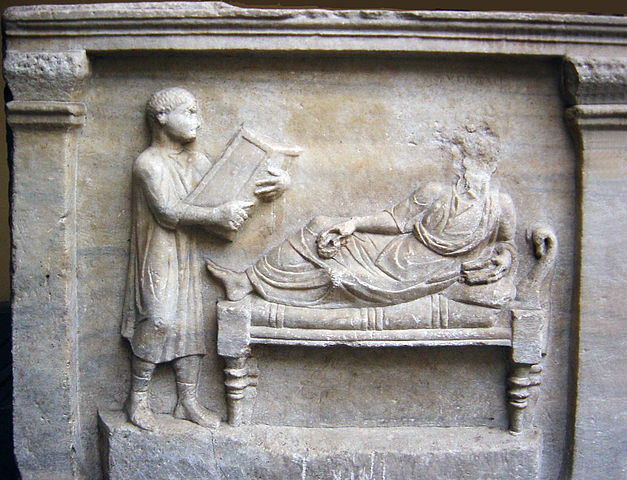
An emperor’s slaves could have a great deal of power and influence, because many of the bureaucrats who occupied high level positions were talented slaves. If these slaves did a good job, they had quite a good chance of being freed. The fact that these slaves worked alongside freemen shows that their work was not innately demeaning. However, only the few most talented of the emperor’s slaves achieved this kind of position – most were much more unskilled workers such as footmen.
Gladiators could have good lives or bad lives depending on how strong they were. Fighting as a gladiator was very dangerous, training was hard and they had no choice but to kill their fellow fighters. However, they were given good food and medical care, and fighting well could lead to a celebrity status. If a gladiator was successful, they could be freed by their master.

Public slaves did much of the administrative work in Rome, so they often had some amount of power, and were treated comparatively well. They usually received a wage that they could use to buy their freedom.
The worst job was almost certainly working in a mine. This was very dangerous and unhealthy work, as slaves faced day-long darkness, poisonous gases and dust emitted from the caves, back-breaking work, cramped conditions and constant fear of cave-ins. Slaves had little chance of survival once they were sent down a mine.
During the later years of the Roman Empire, slaves were treated better and laws were put into place to protect them. This was likely because the slave population was decreasing so slaves became a much more precious resource, one that was much more expensive to replace.
Legally, slaves were treated very badly. Because they were defined as objects rather than people in law, they had no rights. Their master had full control over what happened to them, and could beat them or kill them if he chose. Like in Ancient Athens, slaves who testified in court had to be tortured. Furthermore, if the master was murdered, then all of the slaves in the residence would be killed even if they had nothing to do with it.
Of course, the basic fact of slavery was that slaves had no control over their own lives. They couldn’t decide where they lived, what job they did, whether they married or had children etc. They also had to deal with being thought of as inferior and had to be subservient towards other people, particularly their master. This complete lack of power likely made quality of life and mental wellbeing for slaves very poor, even if they were otherwise treated well by their master.
The fact that many slaves committed suicide proves how awful their lives were. One Roman writer tells of an incident in which a slave jumped off of a roof to avoid their master’s anger. Romans used a sponge on a stick instead of toilet paper, and one gladiator suffocated himself by swallowing this sponge.

What were the main factors that determined how a slave was treated?
Why was it good to have a kind master?
In your opinion, what was the best job for a slave to do? How about the worst?
Was it better to be a slave in the early Republic or late Empire? Why?
In your opinion, was it better to be a slave in Rome or in Athens? Explain your answer.
Given the horrible conditions that slaves were subjected to – being kept in chains and frequently beaten – it’s no surprise that many tried to rebel or run away. Knowingly harbouring or selling runaway slaves was illegal, and there were legal consequences for doing so. Romans could work as professional slave-hunters to track down slaves that had escaped. Slaves that had run away could be sold to be a gladiator, branded with the initials of their owner on their forehead, or given a slave collar with an inscription asking anyone who finds the slave to return them to their master.

There were a number of slave revolts throughout the Roman. Two of the first major revolts happened in Sicily, mainly by slaves working in farming. The first Sicilian slave revolt of 135-132 BCE was led by Eunus and Klein, both of whom were reputed to have mystical powers. The Roman Army was despatched to fight the revolt and the slaves lost.
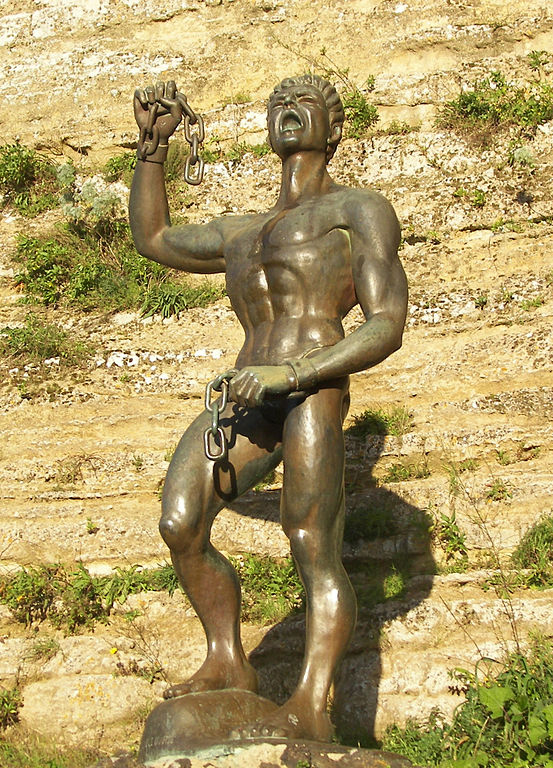
The second Sicilian slave revolt occurred between 104 and 100 BCE, and this time was led by the slaves Salvius and Athenion. This revolt was also eventually put down by the Roman army.

The most well-known slave revolt is the one led by the gladiator Spartacus. He lived in a training school in Capua, but escaped with other gladiators to Mount Vesuvius in 73 BCE. After this, word spread and he was joined by other escaped slaves, including many agricultural slaves. Some sources suggest Spartacus’s forces reached up to 70,000 men. Rome's two consuls went to fight him but lost. In 71 BCE Spartacus’s slaves had reached 120,000, but then the consul Marcus Crassus was sent to fight them and eventually defeated the rebellion. 6,000 slaves were crucified and displayed along the length of one of the major roads of Rome.
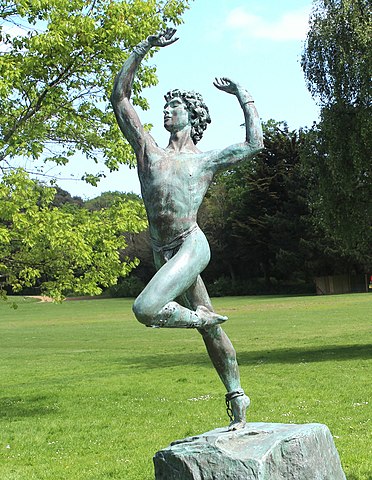
There were other ways for slaves to resist their masters. One of the most common was to work slowly or intentionally break objects. They could also try to injure or kill their master, however this was probably rare because it was hard to do and almost always resulted in the death of the slaves who tried to do it.
Athens had no major slave rebellions. What might this tell us about slave life in Athens compared to in Rome?
Manumission is the word used to describe the freeing of slaves. There were two categories of manumission: formal and informal.
Formal manumission incurred a 5% tax, so masters had to be willing to pay to free their slaves. Formal manumission made a slave a freedman and a Roman citizen, but he didn’t have full rights. He couldn’t fight in the Roman army or go into politics. However, sons of freedmen enjoyed the full rights of citizenship, and weren’t restricted like their fathers.
There were three ways a slave could be formally manumitted. The first was by the rod – a strange legal ceremony where the slave was touched by a rod, told that he was a free man and then slapped by his master. This had to be carried out in the presence of a magistrate, usually a praetor.
Slaves could be freed in a master’s will, however by 4 CE there were limits on who could free slaves this way and how many slaves could be freed. Only masters over 20 could free slaves this way unless there was a very good reason, and only a certain percentage of the total number of slaves a master owned could be freed.
The final way a slave could be formally manumitted was by census. A slave was automatically freed if their master put their name on the census that was carried out ever five years. However, this method was only valid during the Republic.
Informal manumission avoided the 5% tax so it was cheaper, but a freedman didn’t have the same rights and security when freed using this method. They didn’t become a citizen, and their master could revoke their freedom at any point. However, when Augustus became emperor he allowed people freed by informal manumission to attain partial citizenship. The three ways a slave could be freed by informal manumission were very simple: a master could invite friends round and tell them that his slave was freed, write a letter where he stated that his slave was freed, or even just invite his slave to eat with he and his guests.

Compare the advantages and disadvantages of informal and formal manumission?
A master might free their slave for any number of reasons, not least because they were genuinely grateful towards a slave and wanted to reward them. However, there were also less compassionate reasons. A slave might have been freed so that he could receive the corn dole, an allowance of grains for poor citizens, and then give it to his master. Masters might free a slave girl they liked in order to marry them. If a slave knew about a crime that their master committed, the master might free them because while slaves could be tortured into giving evidence, freedmen couldn’t be forced to give up their former master. When slaves were freed, they became known as "clients" of their former master. The more clients a man had the higher his social standing was, so a master might free slaves in order to improve his reputation.
Emperor Augustus became aware of some of these less altruistic reasons for freeing slaves, and tightened laws over which slaves could be freed and when. He was particularly interested in stopping former masters marrying their former slaves and and stopping freedmen giving their corn dole to ex-masters. The reduction of the number of slaves being freed was very important when slaves became scarcer during the late Empire.
Why might a master want to free their slave?
Why would emperors in the late Empire want to reduce the number of slaves being freed?
Private slaves who were freed became part of the patron-client system. Their former master became their patron, and they were expected to support him in any elections or legal battles, accompany him and give him help if he needed it. Clients were also expected to either work a number of days a year for their patron or pay a fee. On the other hand, the patron would support their clients financially, for example if the client wanted to set up a business.
Freedmen could reach very influential positions by working as a bureaucrat or secretary under their former master. Within the Empire, freedmen could get important jobs working as part of the civil service under the Emperor. They were allowed to be a vicomagistri or a severi Augustales, two relatively important religious positions. Therefore, there were many ways for talented freedmen to achieve power.
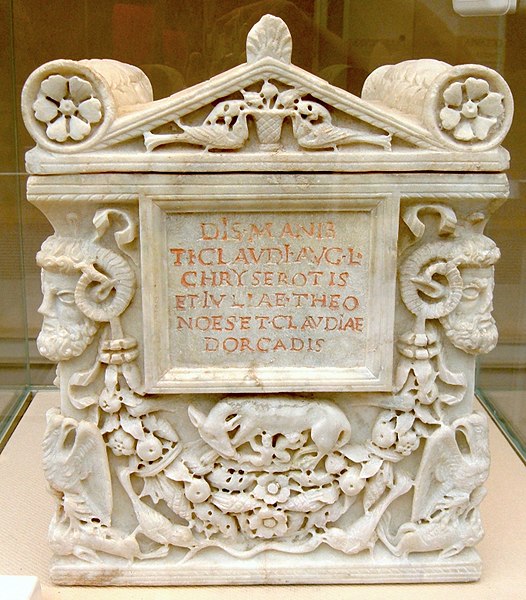
Did freedmen have good prospects? Did they have the same chance to achieve authority and a good life as people who had never been slaves?
Most Romans thought that slaves were essential to the success of Rome. One of the reasons for this was that they carried out almost all of household chores, particularly in rich households. This gave male citizens time to participate in democracy, take part in government, pursue legal cases and advance Roman culture, philosophy, art, literature, etc. If Romans didn’t have free time because they were too busy with chores, Rome may not have developed to be such an integral part of world culture
Free time also allowed citizens to train and participate in the army. This led to a stronger and larger army, which was more able to conquer other regions. Therefore, a lot of Rome’s success as an Empire could be indirectly linked to its reliance on slaves.
Slaves were also very economically beneficial to Rome. They worked on farms to produce items such as olives, grapes and wheat, which were essential for any Roman family. Rome made a lot of money by exporting these produces to foreign places. Slaves helped to craft variousitems in workshops on behalf of their masters, which also improved the Roman economy. Slaves worked in the mines, making a lot of money for their masters and the Roman state. Slaves also sometimes looked after their master's shop, allowing the master to spend time creating new businesses rather than focusing on managing their existing one.
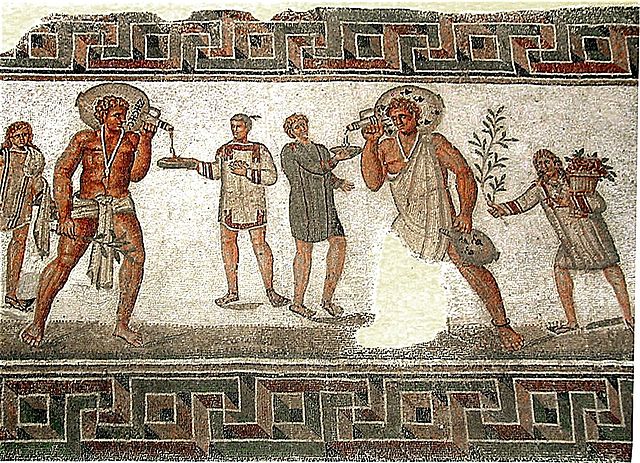
Overall, then, slaves made a lot of money for Rome. This money improved life for Roman citizens. Because of slaves, the state had more money to spend on the upkeep of the city, making it a nicer place to live. More money meant Rome could have a better trained, stronger army, allowing them to conquer a vast section of the world.
Slaves did a lot to maintain Rome. They looked after public buildings like arenas, baths and religious buildings. This made Rome a nicer place to live. They also helped to build roads and bridges which allowed the army to travel faster and also encouraged trade. Slaves therefore contributed both to Rome’s economic and military might.
In the eyes of some Romans, slavery was also essential because slaves were an important part of the entertainment sector. Female slaves could be employed as musicians, dancers or prostitutes, and men could become gladiators to fight each other for the entertainment of the public. However, in modern times we would probably suggest that this entertainment wasn’t essential, and was in fact an inhumane waste of human lives.
It could be argued that slaves weren’t essential, because if they were all freed and simply paid for the work they completed, the outcome would have been the same. However, paying people to do the work slaves did would obviously have been much more expensive, meaning Rome’s economy wouldn’t have been as good. Furthermore, there were many people who could afford to buy a slave, but would not have been able to afford the much larger cost of hiring a servant.
What did slaves’ impact on the economy mean for Rome’s development as a nation?
Do you think that slaves working in entertainment were essential to the lives of Romans?
Do you think slaves were essential to life in Ancient Rome?